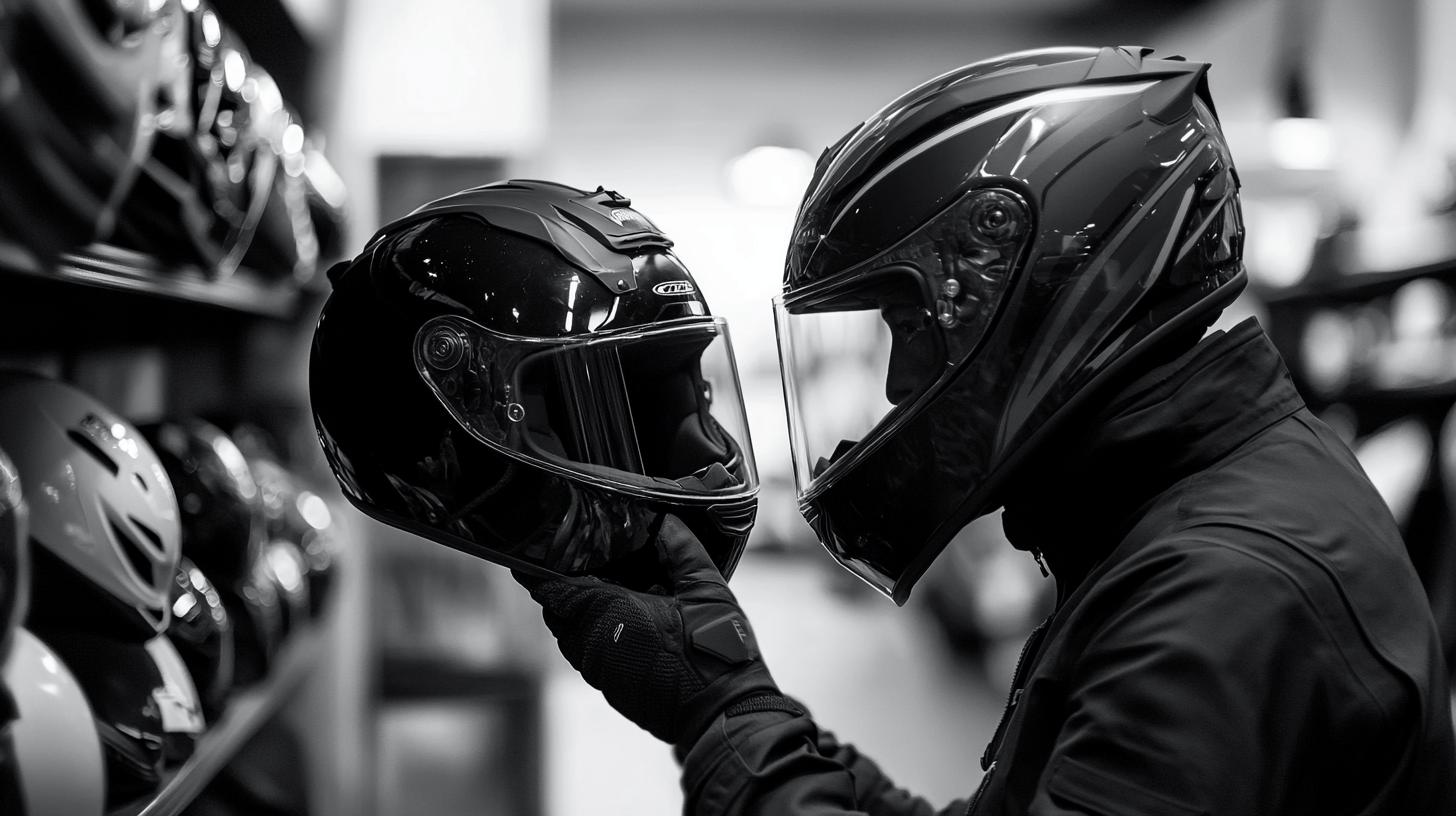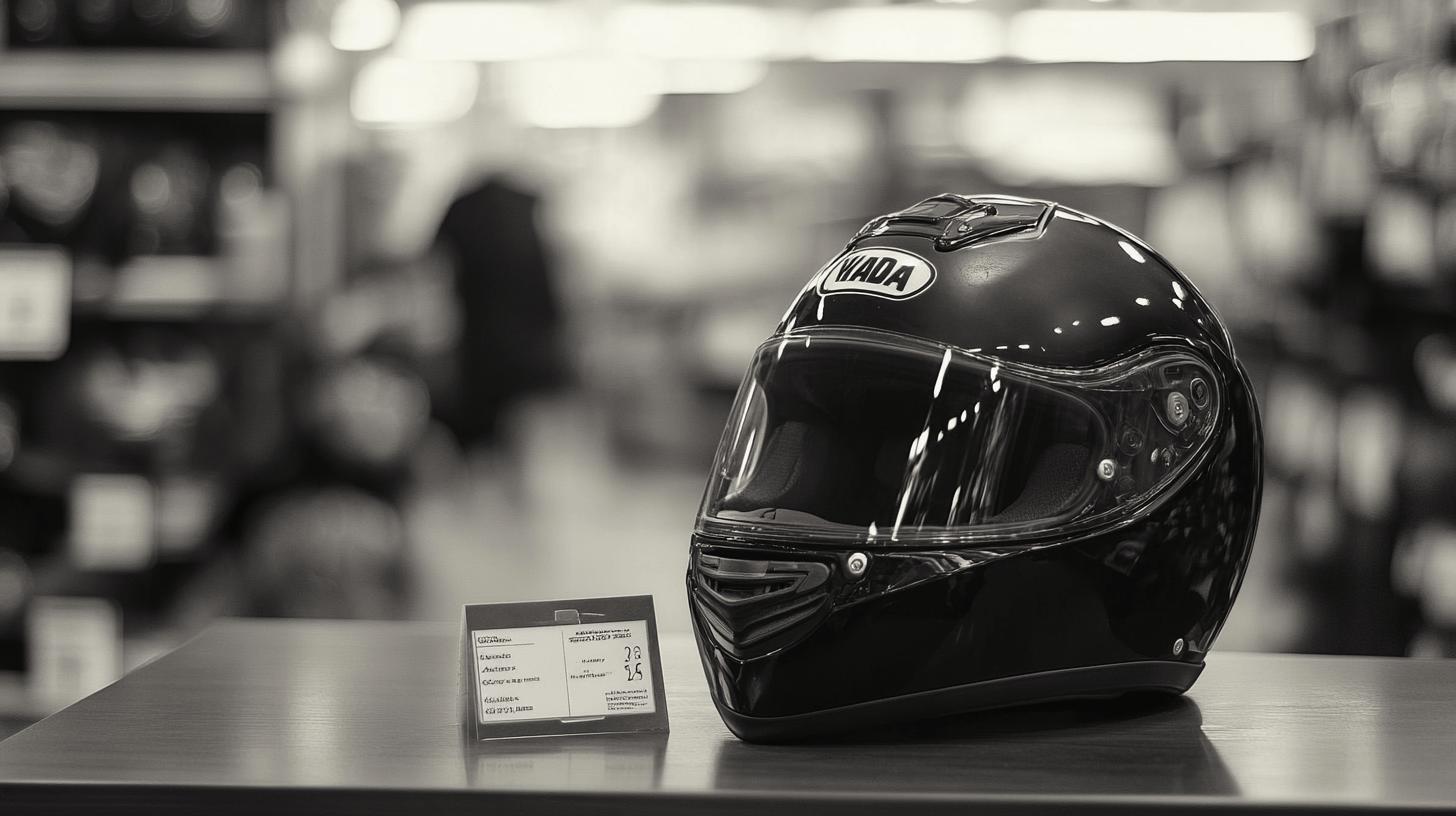How much is a motorcycle helmet really worth? For some, it's just a piece of gear; for others, it's a lifesaver. Motorcycle helmets vary in price, ranging from budget-friendly models under $100 to high-end options exceeding $1,000.
Understanding what drives these costs and their impact on safety and comfort can make all the difference when choosing the right helmet. Whether you're an occasional rider or a seasoned road warrior, navigating the complexities of helmet pricing is crucial to making an informed decision that aligns with your safety priorities and budget.
Understanding Motorcycle Helmet Price Ranges

Motorcycle helmet prices vary widely, accommodating different needs and budgets. A typical helmet can cost anywhere from under $100 to over $1,000.
Entry-level helmets, generally priced between $50 and $150, provide basic protection but may lack advanced features or premium materials. Mid-range helmets, costing between $150 and $400, often offer improved materials and additional safety features, such as enhanced ventilation or noise reduction.
High-end helmets, ranging from $400 to $1,000 or more, are equipped with top-tier materials like carbon fiber and cutting-edge safety technologies, ensuring superior protection and comfort.
-
Entry-level helmets ($50-$150)
-
Mid-range helmets ($150-$400)
-
High-end helmets ($400-$1,000+)
Several factors influence the cost of motorcycle helmets. Brand reputation plays a significant role, with well-known manufacturers often commanding higher prices due to their established credibility and quality assurance. Safety certifications, such as DOT, ECE, or Snell, can also impact pricing, with certified helmets ensuring compliance with rigorous safety standards.
The materials used in helmet construction, such as lightweight carbon fiber or polycarbonate, contribute to cost variations. Additional features, like Bluetooth connectivity or integrated sun visors, can further elevate the price, offering enhanced functionality and convenience for riders.
Factors Affecting the Cost of Motorcycle Helmets

Motorcycle helmet pricing is shaped by several key factors that determine their overall cost. Brand reputation significantly influences helmet prices, as established manufacturers with a history of quality and reliability tend to charge more.
Safety certifications, such as DOT, ECE, or Snell, also play a crucial role in pricing, as they guarantee that helmets meet stringent safety standards. The materials used in helmet construction, such as carbon fiber or polycarbonate, further impact cost, with premium materials leading to higher prices.
Additionally, features like Bluetooth connectivity or integrated sun visors can elevate the price due to the added convenience and functionality they provide.
| Factor | Impact on Cost |
|---|---|
| Brand Reputation | Higher for well-known brands |
| Safety Certifications | Increased cost for certified models |
| Construction Materials | Premium materials raise prices |
| Additional Features | Extra features increase cost |
These factors collectively determine the overall value of a motorcycle helmet. Investing in a helmet with high-quality materials and advanced safety features can enhance protection and comfort, justifying higher costs.
While additional features contribute to price variations, they can offer riders enhanced functionality, making the helmet worth the investment in terms of both safety and practicality.
Comparing Costs: New vs. Used Motorcycle Helmets

When considering whether to buy a new or used motorcycle helmet, new helmets are generally recommended. The primary reason is safety; new helmets offer assurance that they have not been compromised by previous impacts or wear.
A new helmet ensures compliance with the latest safety standards and features, which is crucial for rider protection. Additionally, manufacturers typically recommend replacing helmets every five years to maintain optimal safety due to material degradation over time.
-
Unseen damage in used helmets
-
Potential safety compromise
-
Long-term investment in safety
Investing in a new helmet may cost more upfront, but it provides a long-term safety guarantee. Over time, the peace of mind that comes with knowing the helmet has not suffered from previous impacts is invaluable.
New helmets often incorporate the latest safety technologies and materials, enhancing protection and comfort. Thus, while a used helmet might appear to be a cost-saving option initially, the potential risks and reduced safety make new helmets a wiser investment for serious riders.
Budget-Friendly Helmet Options and Deals

Budget-friendly helmet options are widely available, catering to riders who seek protection without breaking the bank. Typically priced between $50 and $150, these helmets provide basic protection and may come with fewer advanced features compared to higher-end models.
They remain a viable choice for those who prioritize cost while still obtaining necessary safety gear. Affordable helmets can be found across different brands, offering varying levels of comfort and style to match individual preferences.
-
Clearance deals
-
Online stores
-
Seasonal sales
- Retailer promotions
Balancing cost with safety is crucial when choosing budget helmets. While affordable options are attractive, ensuring the helmet meets safety standards like DOT certification is vital. Look for deals that do not compromise on safety features, including adequate padding and ventilation. By carefully considering these factors, riders can find a helmet that provides both financial savings and dependable safety.
The Value of Investing in Premium Motorcycle Helmets

Premium motorcycle helmets are often considered a worthwhile investment for riders seeking enhanced safety and comfort. These helmets, priced typically between $400 and $1,000 or more, are equipped with advanced safety technologies that exceed basic protection standards.
For instance, helmets like the Bell Race Star DLX Flex and Shoei Neotec 3 incorporate cutting-edge materials and features designed to minimize impact forces and provide significant protection during a crash. Additionally, the design of premium helmets often includes aerodynamics that reduces wind resistance, contributing to a more stable and comfortable ride at high speeds.
This level of engineering not only improves safety but also enhances the overall riding experience by reducing fatigue and increasing comfort.
-
Advanced safety technologies
-
Superior comfort and fit
-
High-quality materials like carbon fiber
Specific models highlight the benefits of investing in premium helmets. The Bell Race Star DLX Flex, with a price tag ranging from $800 to $1,000, features magnetic padding and a photochromic visor, offering both convenience and superior protection.
The Shoei Neotec 3, priced at $900, is celebrated for its quietness and aerodynamic efficiency, although it lacks the ECE 22.06 certification. These helmets are constructed with high-quality materials such as carbon fiber, known for its lightweight and robust nature, which ensures both durability and enhanced impact protection.
Investing in these high-end helmets translates to a significant motorcycle safety investment, providing peace of mind and a more enjoyable riding experience.
Tips for Economical Motorcycle Helmet Shopping

Smart shopping is key when it comes to purchasing motorcycle helmets economically. Prioritizing cost-saving strategies can help riders obtain quality helmets without overspending.
Timing your purchases to coincide with sales can significantly reduce costs, as many retailers offer discounts during specific periods, like end-of-season sales. Exploring online discounts can also lead to substantial savings, with many e-commerce platforms providing promotional codes and special deals.
Comparing different retailers is another effective strategy, as prices can vary widely between sellers. While seeking economical options, it remains crucial to prioritize safety certifications and proper fit, ensuring that reduced costs do not compromise protection.
-
Timing purchases during sales
-
Exploring online discounts
-
Comparing different retailers
- Prioritizing safety certifications and fit
Balancing quality and price is essential in economical helmet shopping. While it's tempting to focus solely on price, the helmet's safety features and fit should never be compromised. Ensure that any helmet, regardless of cost, meets recognized safety standards like DOT or ECE certification.
A well-fitted helmet not only enhances comfort but also maximizes safety. By considering these factors, riders can achieve a balance that provides both financial savings and comprehensive safety.
Final Words
Charting the landscape of motorcycle helmet prices reveals a spectrum of options. Costs span from affordable entry-level helmets to premium models with advanced technology.
Factors like brand, materials, and safety certifications determine pricing. While new helmets promise safety, used options might compromise it. Budget-friendly deals can offer excellent value. Investing in premium helmets enhances comfort and protection.
Knowing how much a motorcycle helmet costs helps in making an informed purchase, leaving riders with better gear choices and a safer journey on the road.
FAQ
How much does a motorcycle helmet with Bluetooth cost?
A motorcycle helmet with Bluetooth connectivity typically ranges from $150 to $500, depending on brand, features, and safety certifications.
What is the average cost of a motorcycle helmet?
The average cost of a motorcycle helmet ranges from $50 for entry-level options to over $1,000 for high-end models with advanced safety features.
Are expensive helmets worth it?
Expensive helmets are worth the investment for their superior protection, comfort, and advanced materials, enhancing both safety and riding experience.
How many years is a motorcycle helmet good for?
A motorcycle helmet is generally reliable for up to five years before it should be replaced to maintain optimal safety.
Why do helmets cost so much?
Helmets cost more due to safety certifications, advanced materials, brand value, and additional features like Bluetooth or improved aerodynamics.

Ryan Thompson is a 35-year-old sport bike enthusiast known for his adventurous spirit. With years of weekend rides and exploring new roads, Ryan brings fresh insights and firsthand experience to ProtectiveGearz. His energetic approach and passion for the latest gear make him a trusted source for riders seeking up-to-date advice.



